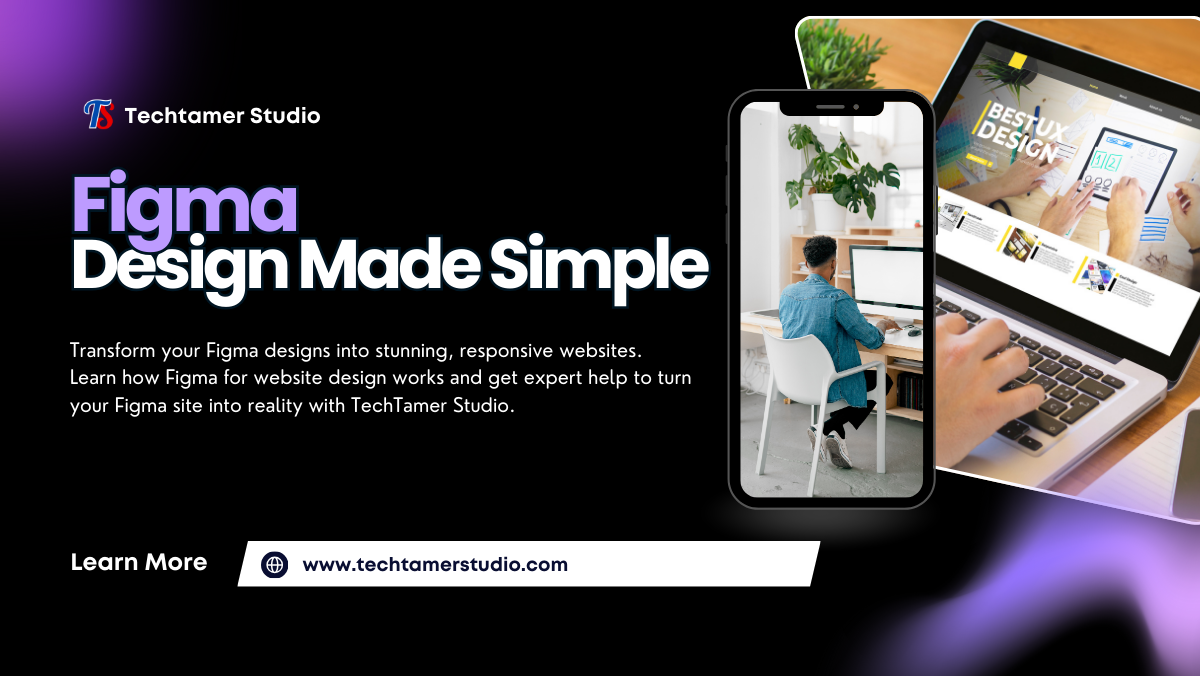
When it comes to modern web design, one tool has completely changed the way designers and developers collaborate Figma From wireframes to interactive prototypes, Figma web design has become the go-to solution for creating seamless, user-friendly, and responsive websites. Whether you’re looking for figma for website design, learning how to convert figma to website, or exploring figma webdesign trends, this guide covers everything you need to know.
Why Figma Web Design is the Future
Unlike traditional design tools that require heavy installations, Figma works directly in the browser. This makes it incredibly fast, collaborative, and accessible. For businesses looking to scale their online presence, figma website projects offer a smoother workflow from design to launch.
- Real-Time Collaboration: Multiple team members can work on the same figma site project simultaneously.
- Cross-Platform Access: No need for software installation access from any device with a browser.
- Seamless Prototyping: Interactive mockups reduce guesswork before development starts.
- Easy Handoff: Developers can inspect design files, copy CSS, and ensure pixel-perfect results.
What Makes Figma Ideal for Website Design?
Using figma for website design eliminates the communication gap between designers and developers. Here’s why it’s the preferred tool:
1. Cloud-Based Workflow
No more emailing heavy files back and forth. With figma site projects, everything is stored in the cloud, accessible anytime.
2. Design Systems and Components
Figma allows reusable components (buttons, headers, footers) to ensure design consistency across the website.
3. Responsive Web Design
With auto-layouts, resizing rules, and grids, figma webdesign makes it simple to adapt layouts for mobile, tablet, and desktop.
How Figma to Website Conversion Works
One of the biggest concerns businesses face is moving from design to development. Fortunately, converting figma to website is easier than ever:
- Design your wireframes and prototypes in Figma.
- Use plugins or third-party tools to export HTML/CSS from figma website files.
- Developers refine the exported code and integrate it into the live website.
- Optimize for performance, SEO, and responsiveness.
Advantages of Using Figma for Website Design
- Time-Saving: Faster design-to-development workflow.
- Cost-Efficient: Reduce revisions and unnecessary iterations.
- Client-Friendly: Share a figma site link, and clients can leave feedback directly.
- Version Control: Never lose track of design updates.
Figma Web Design vs. Traditional Tools
Here’s a quick comparison of Figma web design against tools like Photoshop and Sketch:
| Feature | Traditional Tools | Figma |
|---|---|---|
| Collaboration | Limited, requires file sharing | Real-time, cloud-based |
| Accessibility | Desktop-only | Browser + Desktop App |
| Handoff to Developers | Manual exports | Inspect tools & CSS snippets |
| Cost | Expensive licenses | Free & Affordable Plans |
Best Practices for Figma Website Projects
1. Create a Design System
Build reusable UI elements for consistency across all pages.
2. Use Auto Layout
Ensure responsive figma webdesign layouts that adapt to different screen sizes.
3. Organize Layers and Pages
Keep your figma site clean for easy collaboration and faster handoff.
4. Prototype Before Development
Use clickable prototypes to validate user flows and interactions.
How Businesses Benefit from Figma Website Design
- Startups: Faster MVP creation with figma for website design.
- Agencies: Streamlined workflows and client collaboration.
- Enterprises: Scalable design systems for large teams.
- E-commerce: Better UX/UI for higher conversions.
Steps to Build a Figma Site for Your Brand
- Define your brand style guide (colors, typography, icons).
- Create wireframes to map out user journeys.
- Design high-fidelity mockups in figma webdesign.
- Prototype and test with real users.
- Convert figma to website using development tools.
- Launch and optimize based on analytics.
Future of Figma Web Design
With continuous updates, figma for website design is evolving beyond just UI design. From AI-driven design suggestions to seamless integrations with development platforms, the future of figma webdesign is only getting brighter.
Conclusion: Why Choose Figma for Your Next Website?
If you want a modern, responsive, and scalable website, choosing figma web design is the smartest decision. From ideation to execution, Figma helps create visually stunning websites that convert. And the best part? It simplifies collaboration between designers, developers, and clients.
Are you ready to bring your ideas to life with figma website design? 🚀
Contact TechTamer Studio today for professional figma to website services. We specialize in transforming your figma site into fully functional, SEO-friendly websites that deliver results.
Email us at: hello@techtamerstudio.com
Or visit our Contact Page to get started.
